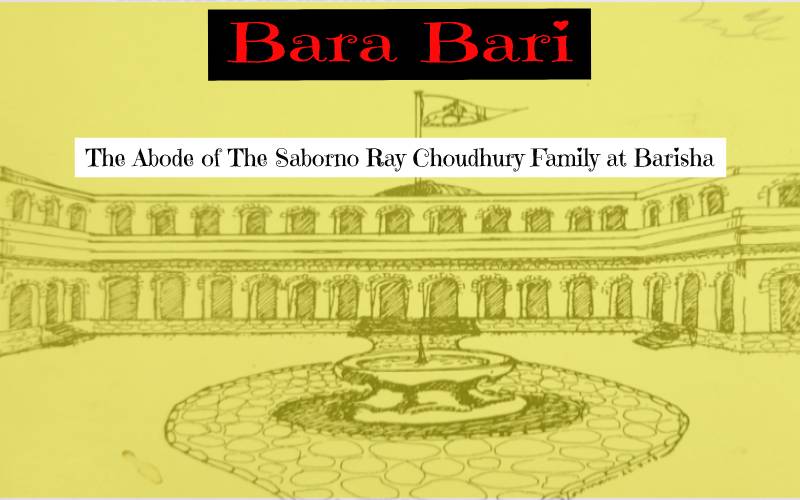
The Saborno Ray Choudhury family occupied a special and an eminent position in the history of Bengal. They happened to descend from Maharshi Savarna (Vedic Sage and Son of the Sun God, Surya). Saubhari Upadhayaya was from the same lineage and this renowned Vedic Brahmin was a Sanskrit scholar at Kanauj. He was well-known all over the country. His descendant Veda Garbha lived in Kanauj during his early years, and he migrated to Bengal under the orders of King Adi Sura.
Veda Garbha was given a Jaghir (A huge piece of land from which one could earn substantial income and this land would consist of a number of villages) those days. One of the descendants Lakshmikantha founded the first Saparivara Durga Pooja in the year 1610 AD at Bengal. He got together Lakshmi, Saraswati, Karthik, Ganesh, and Mahishasura Mardhini Durga together in the same structure.
Lakshmikanta chose Barisha for this purpose and this place has a longstanding association with the Saborno Ray Choudhury family in Bengal. The social history of Barisha can be traced to the time of Sena Dynasty when the Mithra family came and settled here. Bara Bari is the abode of the Saborno Family at Barisha. This village had evolved out as a distinct one in the group of villages and was designated with the name Byala. This happens to be the local corruption of the Pathaan Bhai Mahal during the Mohamadean times.
The revenue from this region had been assigned for the purpose of giving a stable income to the royal household's harem and hence the name Bhai Mahal. Ray Lakshmikanta Majumdar Choudhury (1570 –1649) was a scion of the Soborno family of Halisahar. The gentleman had received his title and estates from the Mughal Emperor Noor Uddin Jahagir in 1608 A. D. Barisha’s well-bred society and the cultural atmosphere made him choose it as his Katcheri (Hall used for political or social assemblies/secretariat).
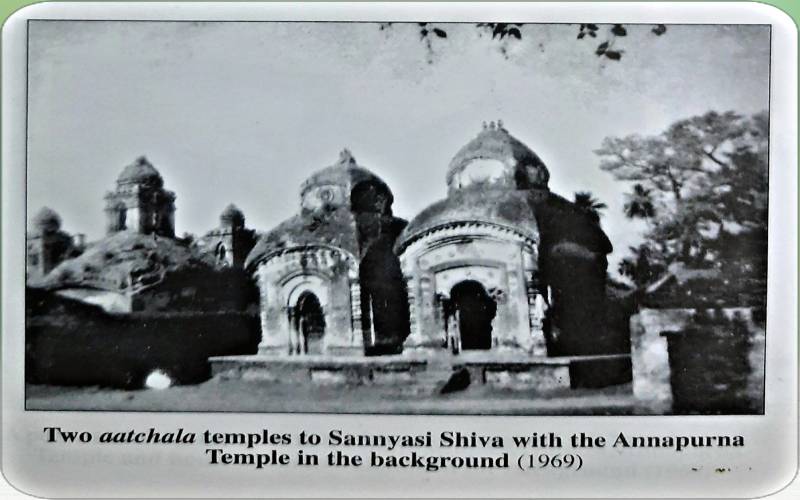
Lakshmikanta erected an aatchala on the western side of his katcheri for celebrating his Durga Pooja. He was a down to earth person and therefore the structure created by him was bereft of royal glory. He was keen to foster the welfare of his subjects. His entire family would attend the annual Durga Pooja, and their social gathering would consist of 1000s of people belonging to various walks of life. People used to travel from all over the jaghir and flock at Barisha to take part in the 5-day festival. The same pooja is being celebrated with pomp, grandeur and éclat for more than 400 years now. Lakshmikanta is rightly called as ‘The Father of the Modern Bengali Durgotsav.’
Srimanta (1625 – 1681), the third son of Lakshmikanta’s second son Gaurikanta (1600 – 1669), shifted permanently to Barisha in order to have a personal contact with his subjects. Sreemanta’s younger son Keshav Ram (1650 –1726) was a prominent figure in Bengal administration and this earned him the title Samajpathi (Social headman). Additionally, the Nawab of Bengal conferred on him the title Ray Choudhury, Nishan (Mark) and Khilat (Any gift of money or goods awarded to tributary princes) with the gift of some additional jaghirs in 1699.
Keshav Ram’s second child, Krishnadeva (Born on 1682), was a worthy son and therefore he was given the largest share in the Zamindari. By about 1710 A. D., Krishnadeva constructed a palatial abode in East Barisha with Simhadwaar, Thakur Dalan, gardens and a lake to ensure adequate space for his younger brothers.
Keshav Ram’s third son, Raghudeva (Born on 1690), moved to his newly constructed house and started a separate Durga Pooja in 1739. He named this house after his son as Balaram Babur Bati. It is presently known as Kalikinka Bhavan. The pooja is still being celebrated in a befitting manner and is managed by the Kalikinka Trust. Kalikinka was a most prominent person in the line of Raghudeva. He was a champion of Bengali Rennaissance and Education within his zamindari.
Keshav Ram’s fourth son, Shivadeva (1710 –1799), was dearest to his father. A temple of Lord Shiva was built by the father in order to commemorate the birth of Shivadeva. He lived to become the richest of all Saborno zamindars in his lifetime. The land reforms made by him earned him the goodwill of his subjects. Therefore, his subjects named him Santosh. He gave away more than 100,000 bighas (Unit of Measurement) of land to Brahmins, peasants and temples. The Aatchala Durga Pooja acquired more fame and grandeur during his time.
Keshav Ram’s fifth son, Kalyan moved away from Barisha, and Sarat Chandra Ray Choudhury (Raja of Chanchol) is the most illustrious of his descendants. Later, several descendants of Shivadeva divided the zamindari in-between themselves and this gave birth to separate Durga Pooja-s in addition to that of aatchala. Krishnadeva had constructed a house in 1710 A. D. It was a wonderful piece of architecture, and it covered an area of 54 bighas (18 acres). This was encircled by ditches, tranches, and masonry wall. The vastness of the complex provoked his subjects to call it Bara Bari meaning the big house or the house of the powerful.
Krishnadeva started a new Durga Pooja in this house during 1770 and he had taken due permission from his father for the same. Again in 1719, the most illustrious zamindar of the 24 paragana-s founded the Barisha Rata Yaatra Utsav. Until 1983, it was an annual religious celebration of the family. The festivity was more a kind of entertainment for the country folk who consisted primarily of subjects belonging to the zamindari.
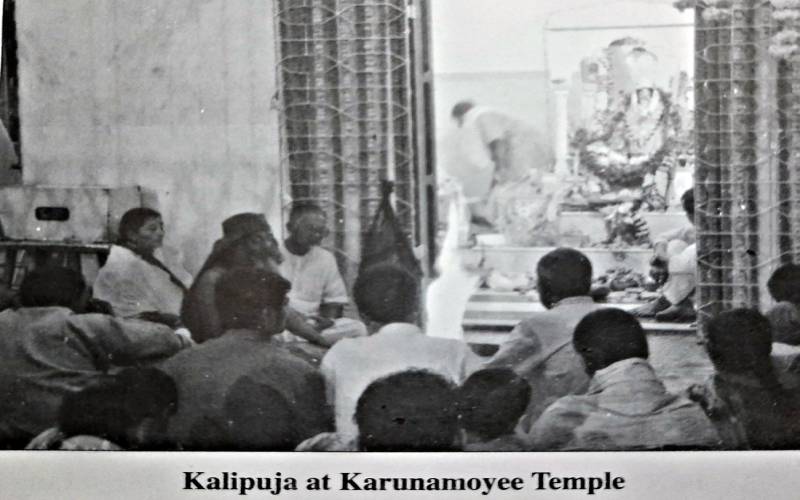
Krishnadeva’s only son Nandadulan (Born on 1722) had three sons Raghavendra, Ramcharan, Jagannath and a daughter Karunamoyee. She passed away at the age of seven and this prompted Nandadulal to build a Kali Temple along with a dozen Shiva temples in 1760. This was built near the present Toliganj bridge in Pashchim Pantiary and consecrated as the Karunamoyee Kali Temple. It is said that Rani Rashmoni visited this temple on her way back from Ganga Sagar pilgrimage. Martin and Burn Company designed the Dakshineshwar Kali Shrine on the model of this temple.
The old temple got dilapidated and a new one came up post 1984. Recently, a meditation hall was constructed there. Unlike, the other Kali temples the deity of Goddess Kali and Mahakaal, Lord Shiva is carved out of a single slab of black granite. The face of the goddess is sweet and calm just like a 7-year-old girl. Recently, the present Sebayat Ashok Ray Choudhury (Descendant of Nandadulal) undertook projects to once again laden the temple with terracotta architecture.
Nandadulal’s second son, Ramcharan constructed a separate residence and named it after his grandfather as Krishnagovindo Lodge. He started the Durga Pooja in his newly constructed house after 1760 and this place is known as Mejo Bari. His Grandson Umacharan built one more house and eventually nine households were celebrating the Annual Durga Pooja.
The Soborno family has a long relationship with Goddess Kali of Kalighat. Lakshmikanta and his descendants were Jaghurdars and their annual income was more than 12 lakhs. It will not be improper and unethical to declare that Ray Lakshmikanta Majumdaar Choudhury as the father of the civilization that now flourishes in this part of the country. The aatchala is the oldest of its kind in Bengal. The pooja at Bara Bari and Kalikinkar Bhavan are ancient to those at Shovabazar Rajbari.
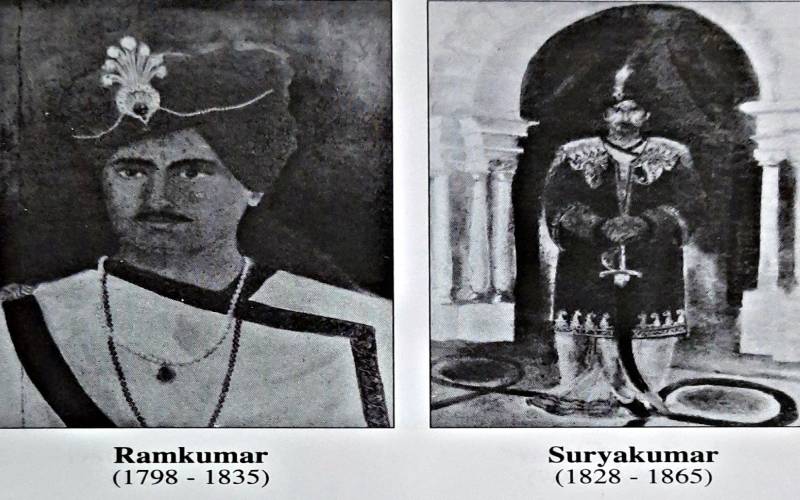
Nandadulal’s son Raghavendra and his son Tharinicharan were popular and Raghavendra took up the title Barishadhipadhi. He had eight sons and Ramkumar, Kalikanta and Chandrakanta among them flourished in Bara Bari. Since Chandrakanta did not have children, he took up Rajendra Kumar, the third son of Jadunath Ray Choudhury, as his adopted child. Rajendra Kumar in turn married the brautiful Chandanbala Devi and their son Haradan passed away early. Eventually, Chandrakanta constructed a beautiful Pancharatna (Made of five precious gems) temple to Goddess Annapoorna in the courtyard of his house (1850). Since he did not have issues, he made a will before his demise and made provisions from his estates for the daily seva poojas of Goddess Annapoorna. His wives Binduvasini Devi and Ganesh Janani Devi were the executors of the will. The original deity weighing about 300 kolas (3 kgs) was cast in gold. Unfortunately, it was stolen in 1956. However, the idol of Lord Shiva weighing 37.5 kgs in silver has survived. The original temple got dilapidated and a new one was constructed with a new idol in 1969 by the heirs of Tharaakumar Ray Choudhury.
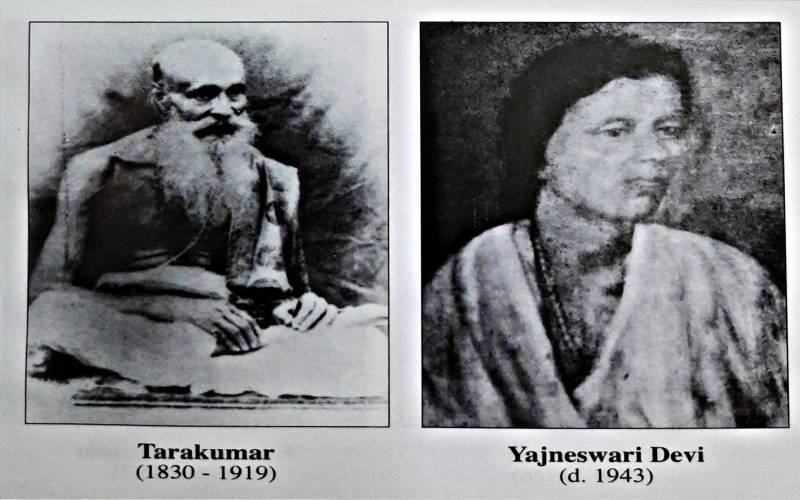
Kalikanta of the same family performed a yajna and was blessed with Yajneshwari and son Nani Gopal followed later. Kalikanta would visit the Kalighat Temple on horseback and worship Devi Kalika the presiding deity of the family. With his passing away, this popular place of pilgrimage slipped off from the hands of this family. Yajneshwari was a great saadhika of a high spiritual order but her only daughter Sushila Bala passed away early. There is also a temple to Sushileswari, a variant of the divine mother as worshipped by Yajneshwari in the form of her daughter, and it is further to the south-east of the Karunamoyee Kali Temple. This was consecrated in 1892 and close association to the famous Bengali Writer Bibhuti Boosan Bandyopadhyay with the temple ashram is well-known. Even today, the temple commemoration day is celebrated on Maghi Poornima day amid pomp and grandeur. Gopal Samaddar, the present Sebayet of the temple has kept the tradition running in spite of hardships.
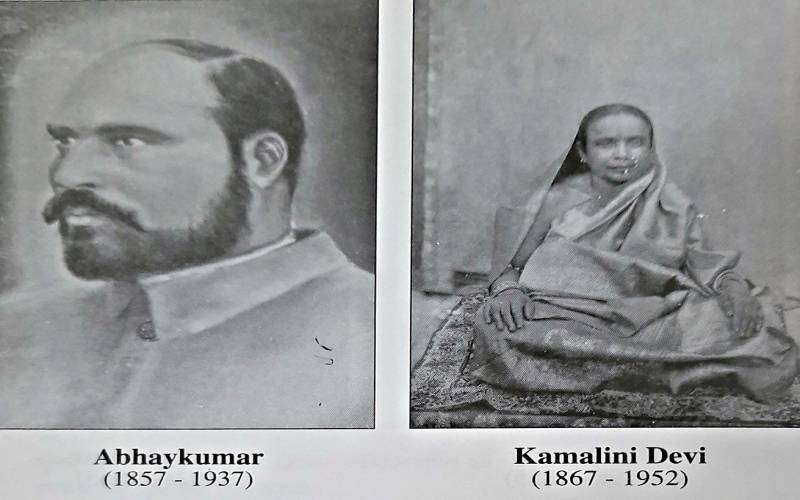
Ramkumar had two sons and they were Suryakumar (1828 – 65) and Tharaakumar (1830 –1990). While Suryakumar was issueless, Tharaakumar (The last Barshaadhipadhi) had four sons, Lalkumar, Abhaykumar, Radhakumar, Priyakumar, and Kamakshyakumar. At present, only the descendants of Tharaakumar live in Bara Bari. The setting of the Barisha High School in 1856 by Suryakumar was a landmark event and it is said that Pundit Ishwar Chandra Vidyasagar came to inaugurate the school. Suryakumar and his family Priest Pundit Jaganmohan Tarkalankaar played an important role in the school. Suryakumar himself was a brilliant man and he had contributed generously towards the charitable works of Reverend James Long.
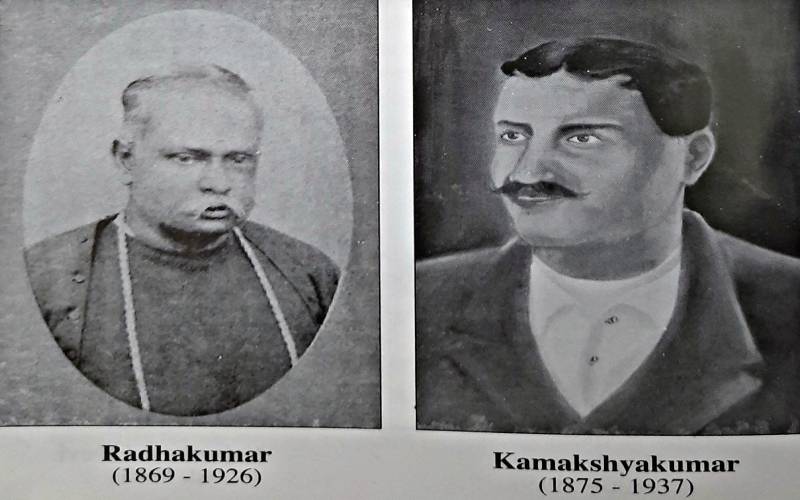
The Ratha Yatra that was founded by Krishnadeva in 1719 met with the disastrous fate when the chariot shed was demolished. As a result, the centuries old chariot ceased to function from 1978 because the chariot had been damaged due to its exposure to rough weather. It was subsequently revived in 1984 by Gorachand Ray Choudhury with the formation of the Barisha Sarbajanin Ratha Yatra Utsav Committee. Under divine inspiration of the Odissi Carpenters from Puri Sri Jagannath Temple, the chariot had been rebuilt. The governor of West Bengal Sri Bhairav Dutt Pandey helped in the reconstruction of the chariot shed and PWD Minister, Jatin Chakrabarty, took an active interest in the project. The Rath Yaatra centers around the temple of Jagannath and had been constructed by Lalkumar in 1907.
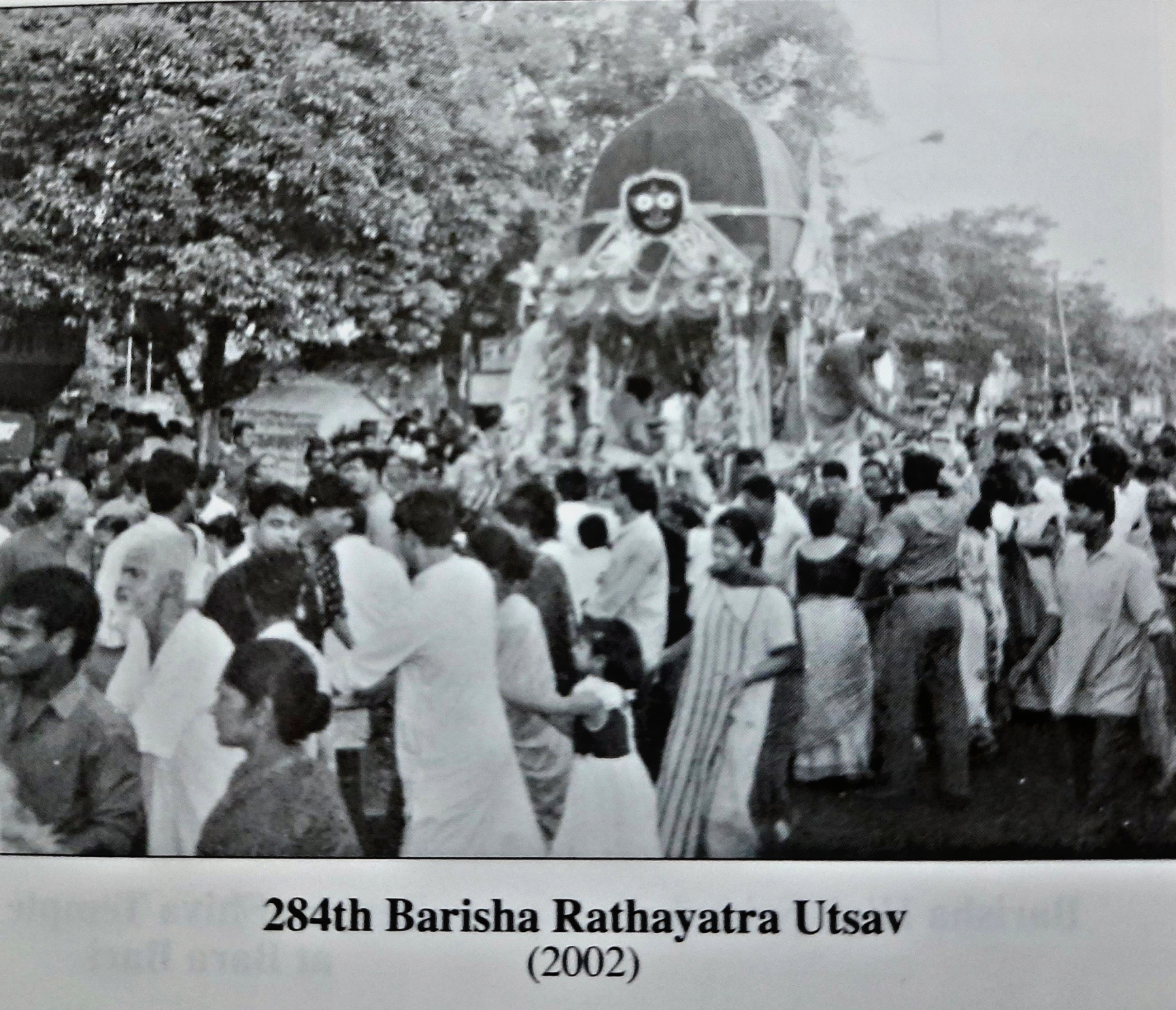
Every year the three deities Jagannath, Subadra, and Balabadra are brought in a colorful procession known as Vahanti Vijayam and taken to Bara Bari to be placed in the chariot. With people pulling the chariot, it moves up and down the east flank of Diamond Harbor Road before ending at Bose Paara. The deities are stationed for next few days in the house of late Hiralal Bose. The festival comes to an end on the ninth day with the punaryatra. This is one of the ancient festivities of Kolkata and indeed the oldest chariot festival, though it has lost much of its colors.
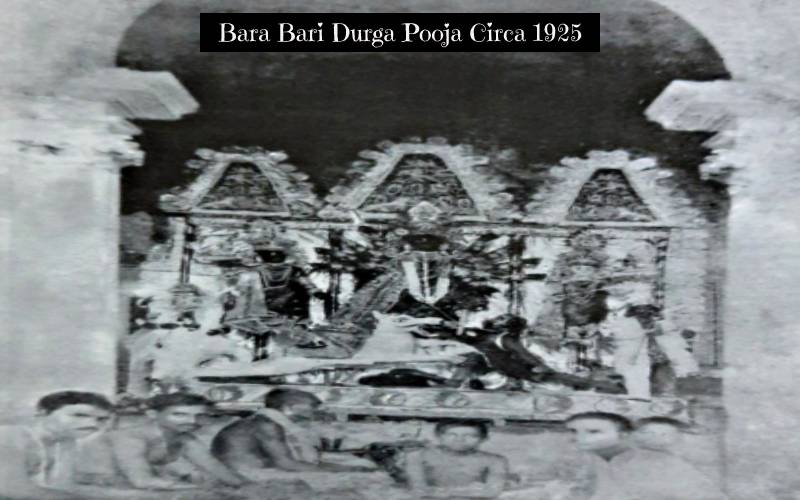
Annual Bara Bari Durgotsav went on smoothly until passing away of the last Barishaadhipati Tharaakumar. Since Lalkumar was disabled, Abhaykumar took upon the affairs. Several issues coupled with European Education destroyed the respect for lineage and social honor. The loss of land made life difficult and Abhaykumar took up to business to keep up his family prestige. He and his brothers acted as secretaries and presidents of Barisha High Schools. Commissioners of the South Suburban (Behala Municipality) etc. The Durga Pooja continued in the Thakur Dalan till the death of Abhaykumar in 1937 and the celebrations came to a complete halt thereafter.
Lalkumar had spent a lot of money on charity. He had no heir and out of Tharaakumar’s remaining four sons, the present Saborno Ray Choudhury's family of Bara Bari comprises the descendants of three of them, Abhaykumar, Proyakumar, and Kamakshyakumar. Radhakumar’s son Ronjahitkumar moved out of Bara Bari in the wake of World War II. But his descendants were active with regard to the annual festivities. Jitendrakumar, the eldest son of Abhaykumar, used to manage the family business and the zamindari like his father. Narendrakumar, the second son of Abhaykumar, was a close associate of the Anushilan Samiti. Of the two younger sons, Nibaran Kumar was the acting principal of Armenian College and was also secretary of Bhavanipur Sangeet Sammillani. Jagadishkumar was a member of the YMCA Students Basketball Team that won the Bengal Championship in 1932 & 33 and he eventually captained the Bengal Basketball Team. Sudhansukumar, the eldest son of Priyakumar, was a congress activist and Commissioner of the South Suburban Municipality. He was close to radical leaders like Jatindra Mohan Sengupta and Netaji Subash Chandra Bose.
He had arranged a public felicitation for Netaji at the Thakur Dalan of Bara Bari when the great man became the President of the Congress. Beni Madhav, the third son of Kamakshyakumar, founded the Barisha Bayam Samiti in 1940s. The Durga Pooja was revived in the year 1994 by the descendants of Tharaakumar but it is being celebrated under a makeshift shamiyana in the courtyard of Bhitar Bari (Inner apartment). The members of this family earnestly hope that they would succeed in reinstalling their ancestral poojas at the original place Thakur Dalan in the near future and adorn it with most of the lost glories.
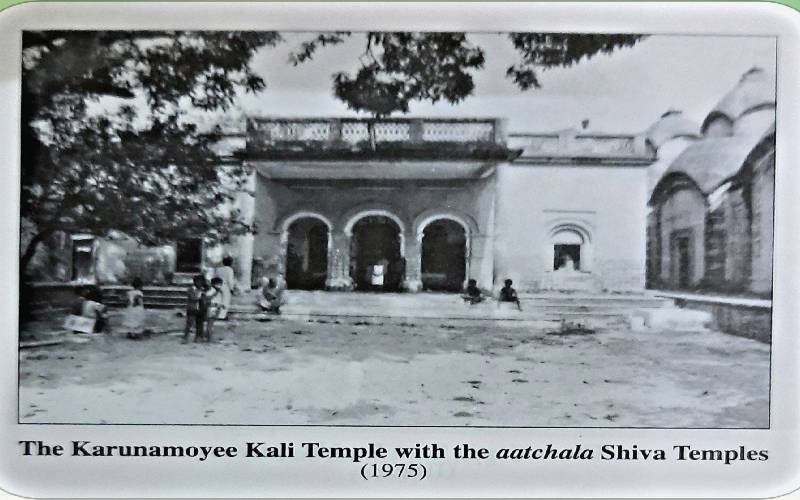
The big social gathering of thousands of Brahmins, Kshatriyas, and Vaishyas, including learned pundits and respected ghatakas who used to pay respect to the social headman during the time of the Durga Pooja is now a thing of the past. Previously, the Durga Pooja was accompanied by the sacrifices of goats and buffalos. Post revival, all other rituals including the Kumari Pooja with the exception of animal sacrifices have been reinstated. Each and every Durga Pooja of the Saborno Ray Choudhury family including that of Bara Bari, are held strictly in accordance with the rules, procedures, and hymns prescribed by the famous Maithili Poet Vidyapati in his magnum opus ‘Sri Sri Durga Bhakti Tarangini.’ Currently, six Durga Pooja-s are celebrated in the entire Saborno Community at Barisha, there are aatchala, Bara Bari, Kalikinkat Bhava, Mejo Bari, Majher Bar, and Benaki Bari. The descendants of Abhatykumar, Radhakumar, Priyakumar, and Kamakyakumar carry out the Bara Bari Durgotsav.
The Saborno family were at their heights during the rule of the Mughals and had their downfall after the battle of Plassey (1757). With the completion of the process in 1953, the zamindari system was abolished in West Bengal through Estates Acquisition Act of 1953. The Saborno zamindars hated exploiting their subjects. The sale of the zamindari by the dissatisfied members led to their own impoverishment and also contributed to the aggrandizement of their dependence on tenure holders.
It would be worthwhile to mention that the Saborno Ray Choudhury's family is essentially a spiritual family with a tradition that they have been carried on for the last thousand years. They believe that they have descended from Maharshi Savarna, a son of Lord Surya. Their ancestor, Veda Garbha, had moved over to Bengal in the 10th century A. D. No other family in the history of India might have established such a great number of temples as they did. The sociocultural, religious, and spiritual integrity of Sabornos is unquestionable. Let us earnestly hope that the Durga Pooja at Bara Bari will begin to take place at Thakur Dalan hereafter. May Goddess Durga bless the descendants of Veda Garbha so that it would once again become possible to celebrate Her pooja amidst great pomp, splendor, and devotion.
Communicated by Probal Ray Choudhury (Great grandson of Priyakumar), Secretary and Chief Executive of the Saborno Sangrahalay and Devarshi Ray Choudary, great grandson of Abhaykumar.
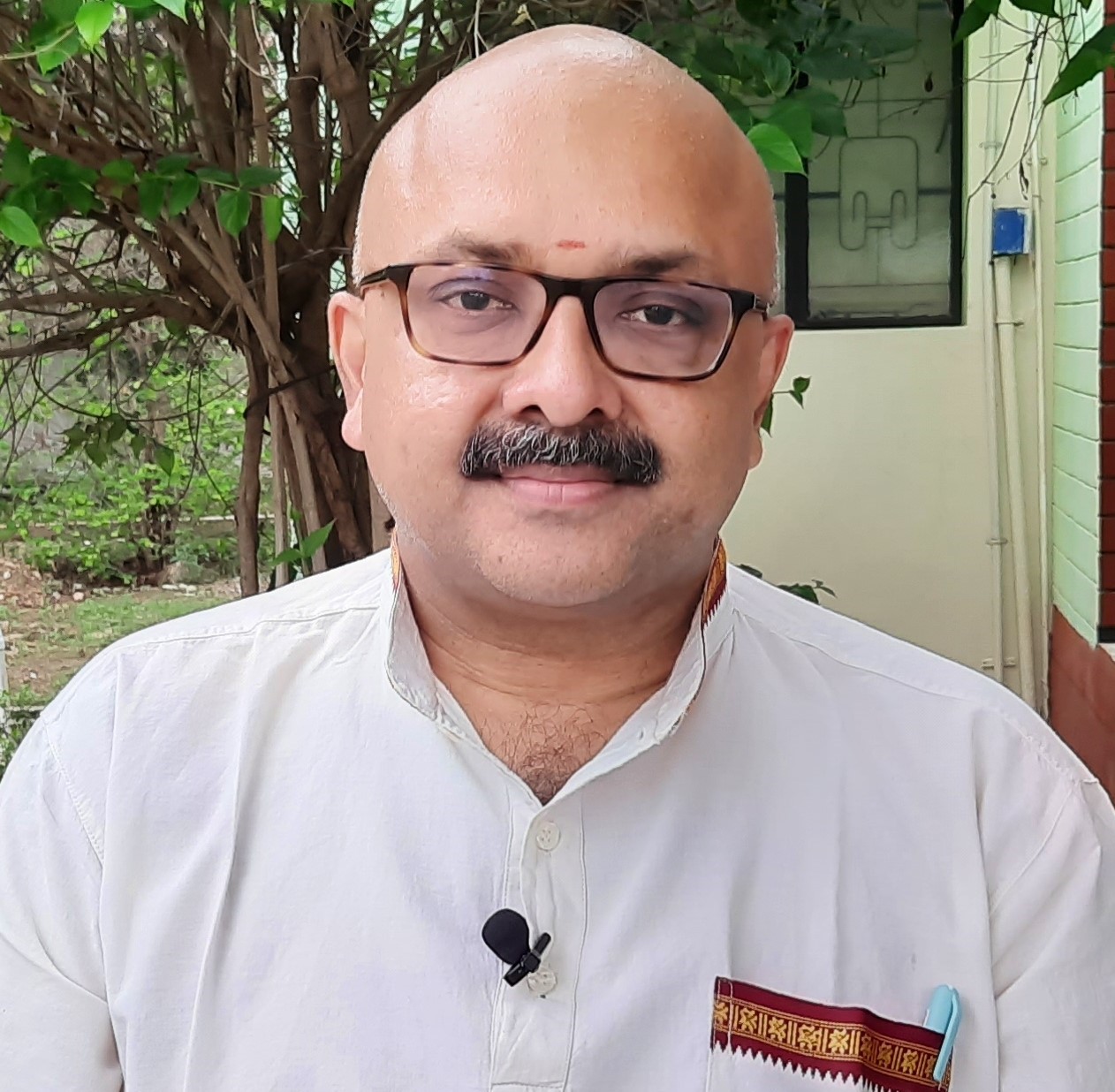
Mr. Rajesh Govindarajulu is one of the founding members of the Verandah Club Pvt. Ltd. He is a leading columnist, historian, jeweler, entrepreneur, and a heritage enthusiast who is earnestly working to revive the past in the light of the present. Experiential learning about the history of Coimbatore is his main course of interest and he is also a panel member of many colleges in the city.
NEXT ARTICLE

At the southernmost tip of this mesmerising ensemble lies the majestic Great Nicobar Island, boasting an impressive landmass of about 910 square kilom...

Bharath has always been a land traversed by spiritual masters/ Guru since time immemorial. These spiritual masters have always upheld the core princip...

South India contains its fair share of unique pilgrimage centres. These divine places of worship have a prominent Sthala Purana, devoted followers, di...